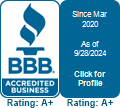
Mastering Mindful Spending: 8 Hacks to Break Free from Shopaholic Debt
In a world dominated by consumerism, it is easy to fall into the trap of being a shopaholic. The thrill of making a purchase can be addictive, but when left unchecked, it can lead to mounting debts and financial stress. If you find yourself entrapped in the cycle of overspending and accumulating debt, it is time to break free from the shopaholic mindset.
Here, we will explore eight practical hacks to help you transition from a shopaholic to a savvy shopper and avoid the pitfalls of shopaholic debt.
1. Create a Realistic Budget
The first step in overcoming shopaholic tendencies is to establish a rigid budget. Look at your monthly income and allocate specific amounts for necessities such as rent, utilities, groceries, and savings. Once your essentials are covered, set aside a reasonable sum for discretionary spending, including shopping.
Setting up a strict budget is an obvious way to combat shopaholic debt, but is not easy to stick to. Never spend more than the monthly amount you have put aside for non-essential expenses. It will not make a difference if you later find a must-have item in the store once you have spent your allocated amount. Handle your finances as you would ration food in a time of war. It will prevent impulsive purchases that contribute to shopaholic debt.
2. Identify Triggers and Curb Impulse Buying
Understanding the triggers that lead to your shopping sprees is crucial in breaking the shopaholic cycle. Whether it is stress, boredom, or the allure of a sale, pinpointing these triggers allows you to develop healthier coping mechanisms.
For instance, if stress drives you to shop, consider substituting stress-relieving activities like exercise or meditation. Hobbies and social interaction with friends can help reduce boredom. Establishing personal boundaries or finding encouraging peers can help you overcome social pressure.
By breaking the association between emotions and shopping, you can gain better control over your spending habits.
3. Embrace Minimalism
Adopting a minimalist lifestyle is an effective strategy for curbing shopaholic tendencies. Evaluate your possessions and focus on quality over quantity. De-cluttering your living space reduces the urge to shop and provides a sense of accomplishment and satisfaction. Embracing a minimalist mindset encourages mindful consumption, helping you break free from the cycle of endless purchases and accumulating shopaholic debt.
4. Unsubscribe from Retail Emails and Notifications
Retailers are experts at tempting shopaholics with enticing deals and promotions. Take control of your inbox by unsubscribing from retail emails and notifications. This simple action eliminates the constant stream of marketing messages that can trigger impulsive buying. Instead, use the extra time to evaluate your needs and make informed, intentional purchasing decisions. Breaking free from the constant barrage of advertisements is crucial to avoiding shopaholic debt.
5. Refrain From Giving In To Sales Signs
Regarding sales, remember that catchphrases like “Biggest Discounts Ever!” and “Last Chance Sale!” are meaningless and a complete marketing ploy. A survey found that 64% of consumers make impulsive purchases due to sales. In actuality, you are being enticed to purchase unnecessary items.
Also, avoid getting sucked into a debt-ridden shopping spree by the allure of free shipping and 50% off on your first purchase.
6. Practice the 24-Hour Rule
Apply the 24-hour rule before spending money on non-essential purchases. This cooling-off period allows you to consider the potential consequences of the purchase, such as its impact on your budget and long-term financial goals. Often, you will find that the initial urge to buy dissipates, helping you avoid unnecessary expenses and preventing the accumulation of shopaholic debt.
7. Seek Support and Accountability
Breaking free from shopaholic habits is a challenging journey, but you do not have to set off alone. Seek assistance from loved ones or friends who share your desire to quit the shopping habit. Share your budgeting strategies, progress, and setbacks with them, creating a system of accountability. Having a support network, can provide encouragement and perspective, making it easier to stay on track and avoid falling back into old habits.
8. Consider Long-Term Goals
Think for a moment about some of your lifelong goals. Perhaps they entail going on a dream vacation, lending a hand to your parents with their mortgage, or getting a graduate degree. Money is essential to achieve these objectives. However, you will not get any closer to achieving your goals when caught in the destructive cycle of shopping, and accruing debt from your compulsive purchases.
Create a list of your objectives and refer to it whenever you are in the mood to shop. The urge will pass as soon as you remember the kind of future you want to build for yourself.
Conclusion
Transforming from a shopaholic to a shopping habit-breaker is a gradual process that requires commitment and self-awareness. By implementing these eight practical hacks, you can regain control over your finances and break free from the cycle of shopaholic debt. Remember to cultivate mindful spending habits, prioritize needs over wants, and develop a healthier relationship with money. Embrace the journey toward financial freedom, and watch as your newfound habits lead to a more balanced and fulfilling life.


